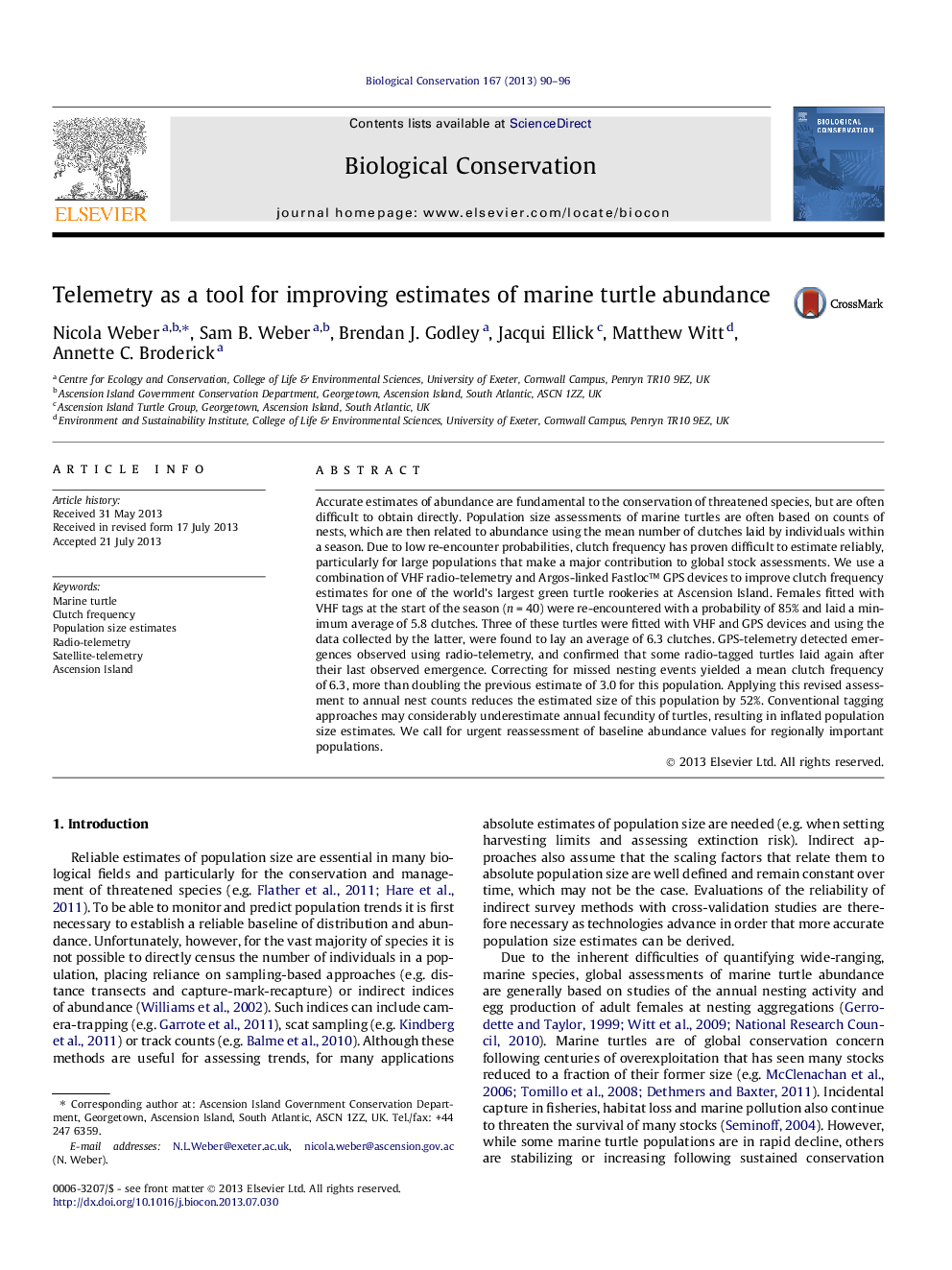| Article ID | Journal | Published Year | Pages | File Type |
|---|---|---|---|---|
| 6300592 | Biological Conservation | 2013 | 7 Pages |
â¢A combination of VHF and GPS telemetry improves fecundity estimates in sea turtles.â¢Clutch frequency estimated using telemetry is twice estimated from conventional tagging.â¢South Atlantic's largest green turtle population half the size as previously thought.â¢Many marine turtle populations may be smaller than current estimates suggest.
Accurate estimates of abundance are fundamental to the conservation of threatened species, but are often difficult to obtain directly. Population size assessments of marine turtles are often based on counts of nests, which are then related to abundance using the mean number of clutches laid by individuals within a season. Due to low re-encounter probabilities, clutch frequency has proven difficult to estimate reliably, particularly for large populations that make a major contribution to global stock assessments. We use a combination of VHF radio-telemetry and Argos-linked Fastloc⢠GPS devices to improve clutch frequency estimates for one of the world's largest green turtle rookeries at Ascension Island. Females fitted with VHF tags at the start of the season (n = 40) were re-encountered with a probability of 85% and laid a minimum average of 5.8 clutches. Three of these turtles were fitted with VHF and GPS devices and using the data collected by the latter, were found to lay an average of 6.3 clutches. GPS-telemetry detected emergences observed using radio-telemetry, and confirmed that some radio-tagged turtles laid again after their last observed emergence. Correcting for missed nesting events yielded a mean clutch frequency of 6.3, more than doubling the previous estimate of 3.0 for this population. Applying this revised assessment to annual nest counts reduces the estimated size of this population by 52%. Conventional tagging approaches may considerably underestimate annual fecundity of turtles, resulting in inflated population size estimates. We call for urgent reassessment of baseline abundance values for regionally important populations.
